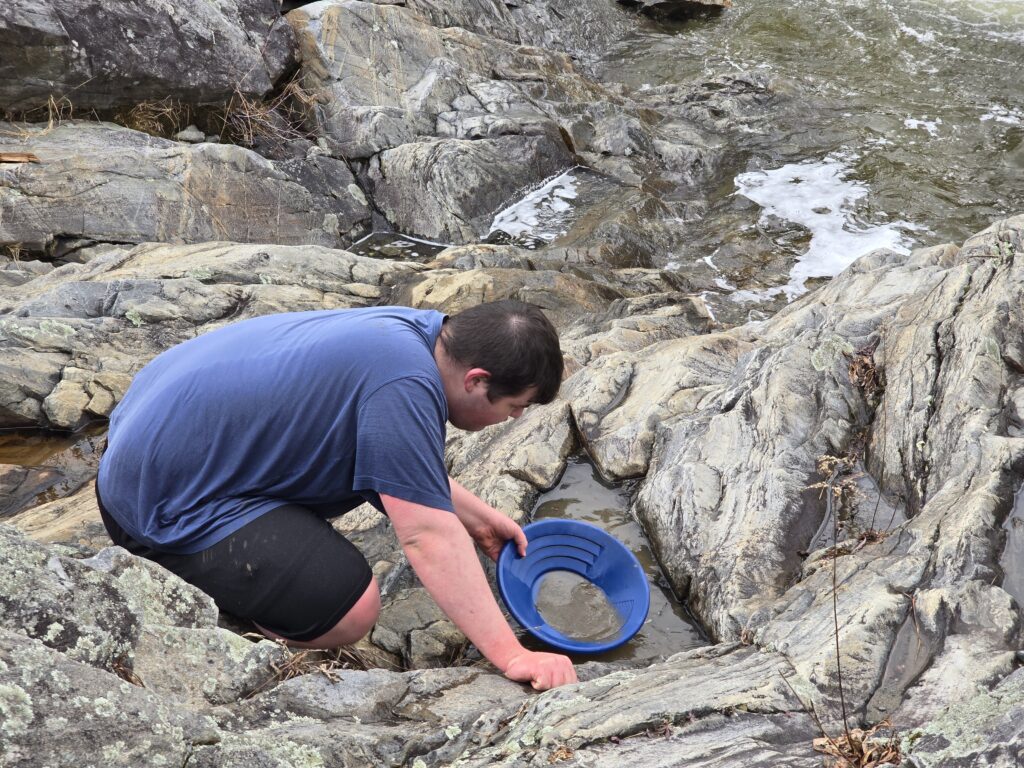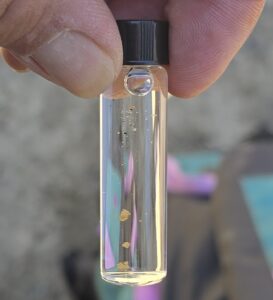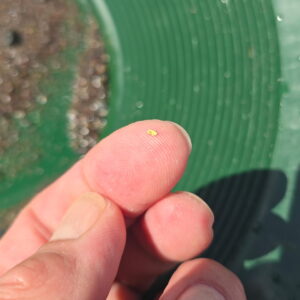My Panning Process

Step One, Finding Material:
My first step is to find a place in the river to gather material to pan. Usually this is were a large rock/boulder formed an eddy during spring thaw. This is one place were gold can be deposited. This is usually behind a large rock near a bend in the river. One other place that can have deposits of heavy material for panning can be rock shelfs in the river. Gold can be found on rock shelf easier than elsewhere because the gold will sink towards the lowest point when in solution(in moving water). The rock shelf acts as the lowest point because the gold cannot pass through it meaning there is less overburden between the gold and the surface. scrape the material from the surface of the ledge to be used for step two.
Step Two, separating your material (optional):
My second step is to run the material through classifiers (this is to remove any large rocks or debris). The size of material I should pan depends on were I’m panning some rivers and streams can have nuggets or picker pieces, while others may only be known for flower gold. However regardless of were I’m panning its worth my time to look through the rocks and pebbles even if just for a moment to ensure I don’t miss any potential nuggets.
Step Three, Panning:
When panning I use a few different types of techniques depending of the type of material I’m panning. If the material has little to no clay or silt, I hold the pan flat with roughly an inch of water above my material, and shake it side to side until the gold sinks down then wash the top layer of lighter sand off using water then repeat. In the event that I’m dealing with silt/clay I will slowly move the pan in a circular motion in the water this is to wash the silt off the sand. Then I pan it like before until the silt starts to show then I slowly wash the silt off once again. I do these steps until I get down to my concentrates.

Step Four, Separation of Concentrates:
My next step is to shake the concentrates with more water lightly tapping the pan as I shake it to sink any potential gold to the low point near the far edge of the pan. After that I use the water to slowly wash the lighter material to the near side of the pan. Once all the material is off that rim any gold should remain in place. Then I collect the flour gold with the sniffer bottle and if I’m particularly lucky I might find a gold flake as displayed below.

